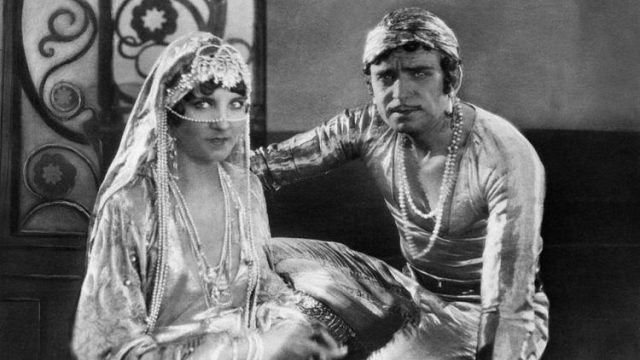We basically don’t have the concept of the starlet today. I think we have a few actresses who fill similar roles, but the idea that there are these women who are just kind of around whose name you may or may not know but whose face and figure you likely did has changed. Partly, this is due to a change in the industry; without studio-run movie magazines, you don’t have the same sort of women who were there just to draw attention to the studios they worked for. And in theory, they could do talk shows, but in practice, they generally want you to have a reason to go on a talk show these days, to have something interesting to discuss. We’re also a lot less likely to give actresses nicknames like “the ‘It’ Girl” or “the Sweater Girl” or what have you.
Julanne Johnston actually played a few lead roles, but by any reasonable metric, she was one of the starlets of early Hollywood. For one thing, she was called the “baby star” of 1924, a term we definitely don’t use anymore. She was in several uncredited roles—admittedly more common in that era, but still an indicator that your character isn’t exactly vital to the story. Further, some of her credited characters have names like “Court Lady” or “Member of Frank’s Gang.” These are not the most prominent characters, generally speaking.
Of course, one of her characters is “The Princess,” from the 1924 (and therefore public domain) Thief of Baghdad. That’s a slightly more important role. Oh, maybe you would not yourself have chosen a nice girl from Indianapolis as an Iraqi princess, but how long ago did they cast Jake Gyllenhaal as a Persian prince? She was apparently actually discovered by Douglas Fairbanks, though honestly a lot of the early stories of people being “discovered” are not entirely accurate.
It seems that, early in the sound era, she was on her way to visit friends in New York. She stopped off at Grosse Pointe, for reasons. She met a guy. They ended up getting married, and she retired from acting. One hopes that’s because she found life in Grosse Pointe more satisfying, not because her husband insisted, of course. Still, if it is, that’s one of the better stories of someone who stopped acting. Settling down and having a couple of kids, even if her husband pressured her into it, is better than a downward spiral, if nothing else.
She was also one of the people on the notorious 1924 cruise of the Oneida, too. I’ve added several of them to the calendar after a viewing of The Cat’s Meow. I didn’t feel I could talk about both of the young actresses, but Johnston seems representative enough of the type. She was young. She was pretty enough so the studios didn’t seem terribly interested in hyping her talent, and she wasn’t talented enough so that you had to regardless of her looks. She was in many ways what we’d call today a working actress, though her type was pretty much “woman who appears so we have an attractive woman onscreen.”
Help fund my quiet home life by supporting my Patreon or Ko-fi!

